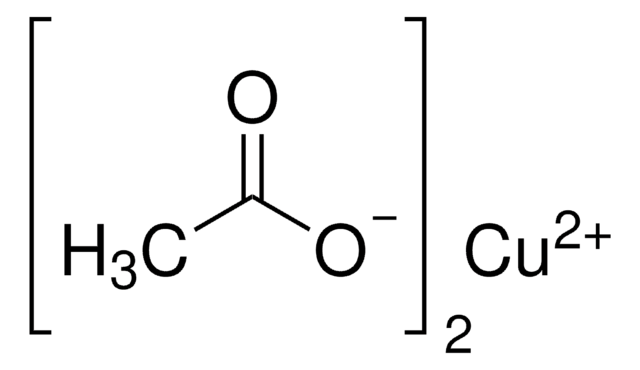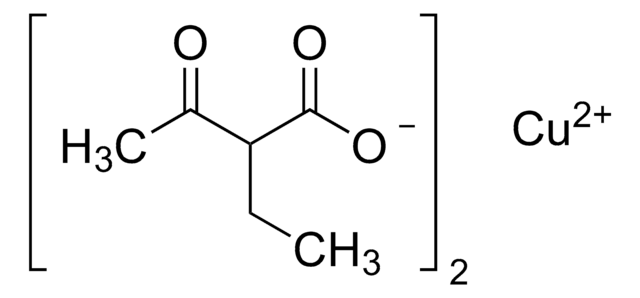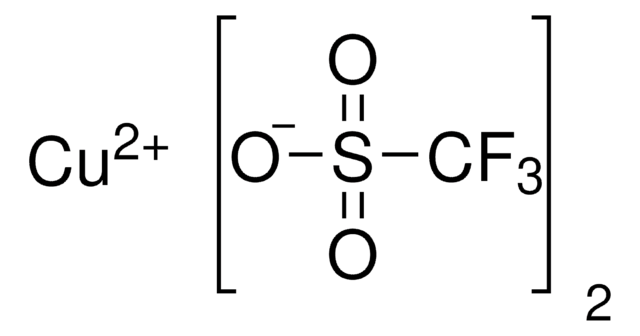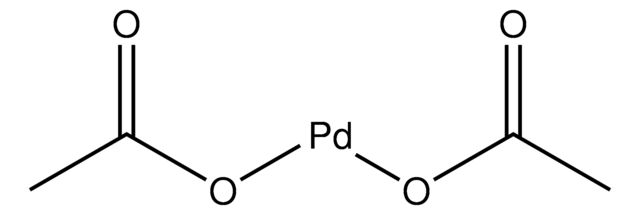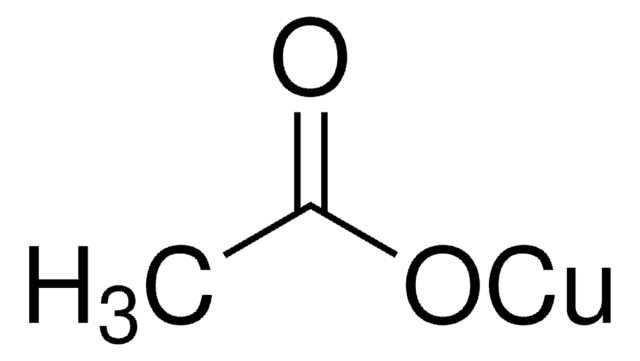337323
Copper(II) 2-ethylhexanoate
Synonym(s):
2-Ethylhexanoic acid copper(2+) salt, Copper bis(2-ethylhexanoate), Copper di(2-ethylhexanoate), Copper(2+) 2-ethylhexanoate, Cupric bis(2-ethylhexanoate)
About This Item
Recommended Products
form
powder or chunks
solid
Quality Level
composition
Cu, 17.0-19.0% EDTA titration
reaction suitability
core: copper
reagent type: catalyst
mp
252 °C (dec.) (lit.)
SMILES string
CCCCC(CC)C(=O)O[Cu]OC(=O)C(CC)CCCC
InChI
1S/2C8H16O2.Cu/c2*1-3-5-6-7(4-2)8(9)10;/h2*7H,3-6H2,1-2H3,(H,9,10);/q;;+2/p-2
InChI key
SEKCXMNFUDONGJ-UHFFFAOYSA-L
Application
- Copper catalyzed Heck-like cyclizations of oxime esters: Discusses the catalytic role of Copper(II) 2-ethylhexanoate in cyclization reactions and its potential reduction or disproportionation under certain conditions (Faulkner et al., 2014).
- A Copper‐Mediated Oxidative Coupling Route to 3H‐ and 1H‐Indoles: Utilizes Copper(II) 2-ethylhexanoate for synthesizing indoles, showcasing its effectiveness in facilitating novel chemical transformations (Drouhin & Taylor, 2015).
- Cu (II) carboxylate arene C─H functionalization: Details how Copper(II) 2-ethylhexanoate is used in nonradical pathways for functionalizing aromatic compounds, significantly advancing synthetic chemistry methodologies (Kong et al., 2022).
- Decarboxylative olefination of activated aliphatic acids: Describes the catalytic capabilities of Copper(II) 2-ethylhexanoate in decarboxylative olefination processes, enhancing the efficiency and scope of organic syntheses (Tlahuext-Aca et al., 2018).
Signal Word
Danger
Hazard Statements
Precautionary Statements
Hazard Classifications
Repr. 1B
Storage Class Code
6.1C - Combustible acute toxic Cat.3 / toxic compounds or compounds which causing chronic effects
WGK
WGK 3
Flash Point(F)
Not applicable
Flash Point(C)
Not applicable
Personal Protective Equipment
Choose from one of the most recent versions:
Already Own This Product?
Find documentation for the products that you have recently purchased in the Document Library.
Customers Also Viewed
Articles
In this article, we will discuss coinage metal deposition processes in order to provide a sense of the most critical precursors, reducing agents, and processes.
Our team of scientists has experience in all areas of research including Life Science, Material Science, Chemical Synthesis, Chromatography, Analytical and many others.
Contact Technical Service